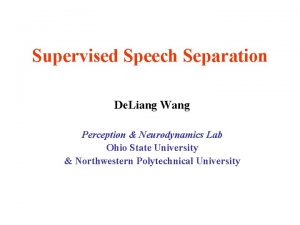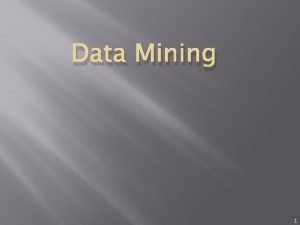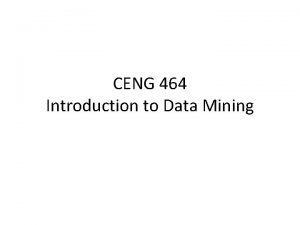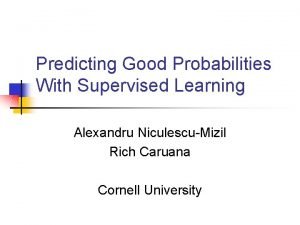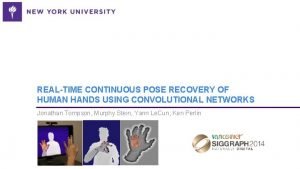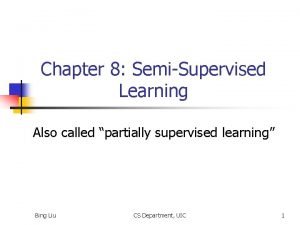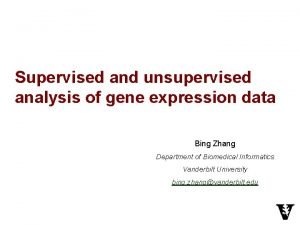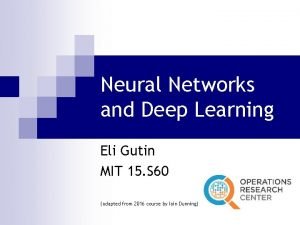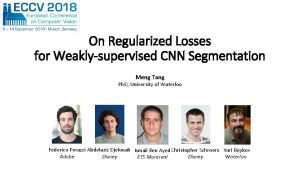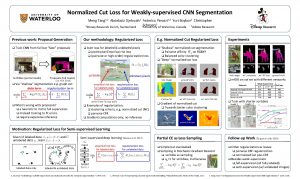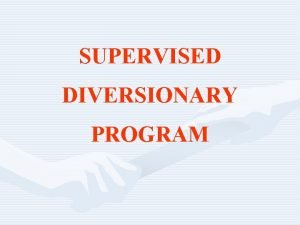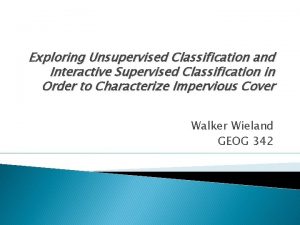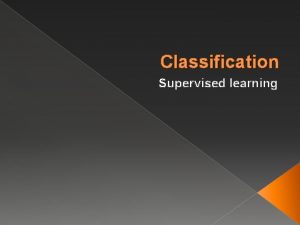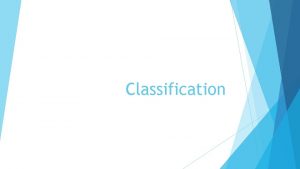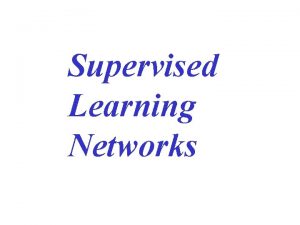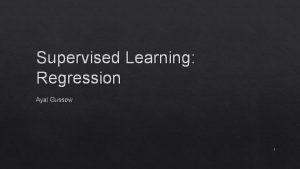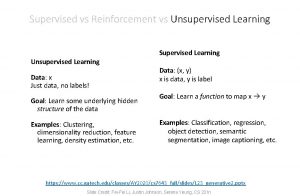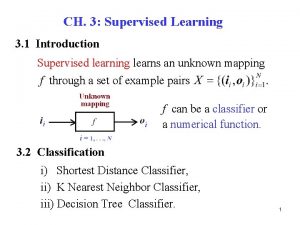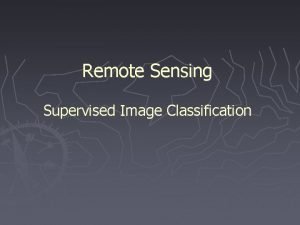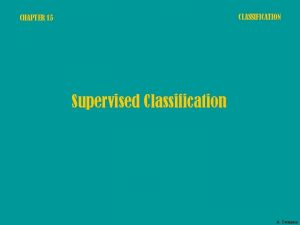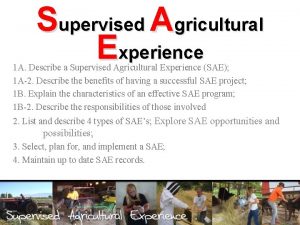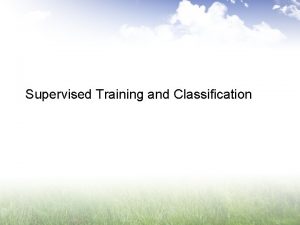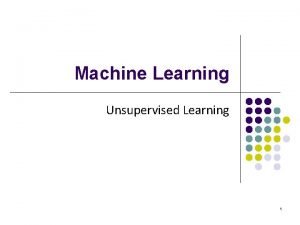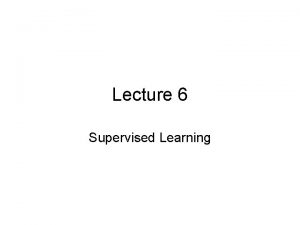Learning What is learning Supervised Learning Training data
















- Slides: 16

Learning

What is learning?

Supervised Learning • Training data that has been classified • Examples – – – Concept learning Decision trees Markov models Nearest neighbor Neural Nets (in coming weeks) • Inductive Bias - limits imposed by assumptions! – Especially what factors we choose as inputs

Rote Learning • Store training data • Limitation - does not extend beyond what has been seen • Example: concept learning

Concept Learning • Inductive learning with generalization • Given training data: – tuples <a 1, a 2, a 3, …> – Boolean value – ai - can be any value – ? Is used for a don’t care positive – Null is used for don’t care negative

• A hypothesis if a tuple that is true • hg <? , …. > - most general - always true • hs <null, …> most specific always false • hg >= hs • Defines a partially ordered lattice

Training Method • Use the lattice to generate the most general hypothesis • Weakness – Inconsistent data – Data errors


Decision Trees • ID 3 algorithm • Entropy: a measure of information – p(I)log 2 p(I) entropy of an element • Entropy of the system of information: – Sum - p(I)log 2 p(I) – P(I) is instances of I / total instances – This is done over the outputs of the tree

• Gain is a measure of the effectiveness of a attribute • Gain(S, A) = Entropy(S) - S ((|Sv| / |S|) * Entropy(Sv)) – Sv Number of outputs with value v is attribute – S is the number of elements in the outputs

ID 3 • Greedy algorithm • Select the attribute by the largest gain • Iterate until done

Markov Models • Markov Chain is a set of states • State transitions are probabilistic • State xi goes to state xj with P(xj | xi) • This can be extended to allow the probability to depend on a set of past states (Memory)

Example from the Text • Given a set of words, Markov chain to generate similar words • For each letter position of the words, compute probability • Use a matrix of counts – Count[from][to] • Normalize rows by total count in row

Nearest Neighbor • 1 NN: • Use vectors to represent entities • Use distance measure between vectors to locate closest known entity • Can be effected by noisy data

k. NN - better • Use k closest neighbors and vote

Other techniques Yet to cover! • Evolutionary algorithms • Neural nets
 Lda supervised or unsupervised
Lda supervised or unsupervised Supervised learning dan unsupervised learning
Supervised learning dan unsupervised learning On training targets for supervised speech separation
On training targets for supervised speech separation Supervised data mining
Supervised data mining Supervised vs unsupervised data mining
Supervised vs unsupervised data mining Predicting good probabilities with supervised learning
Predicting good probabilities with supervised learning Supervised learning pipeline
Supervised learning pipeline Partially supervised learning
Partially supervised learning Deep reinforcement learning example
Deep reinforcement learning example Supervised and unsupervised learning
Supervised and unsupervised learning Eli gutin
Eli gutin Normalized cut loss for weakly-supervised cnn segmentation
Normalized cut loss for weakly-supervised cnn segmentation Normalized cut loss for weakly-supervised cnn segmentation
Normalized cut loss for weakly-supervised cnn segmentation Joanne supervised 36 professionals in 6 city libraries
Joanne supervised 36 professionals in 6 city libraries Supervised diversionary program
Supervised diversionary program Interactive supervised classification
Interactive supervised classification Supervised visitation center dc
Supervised visitation center dc


